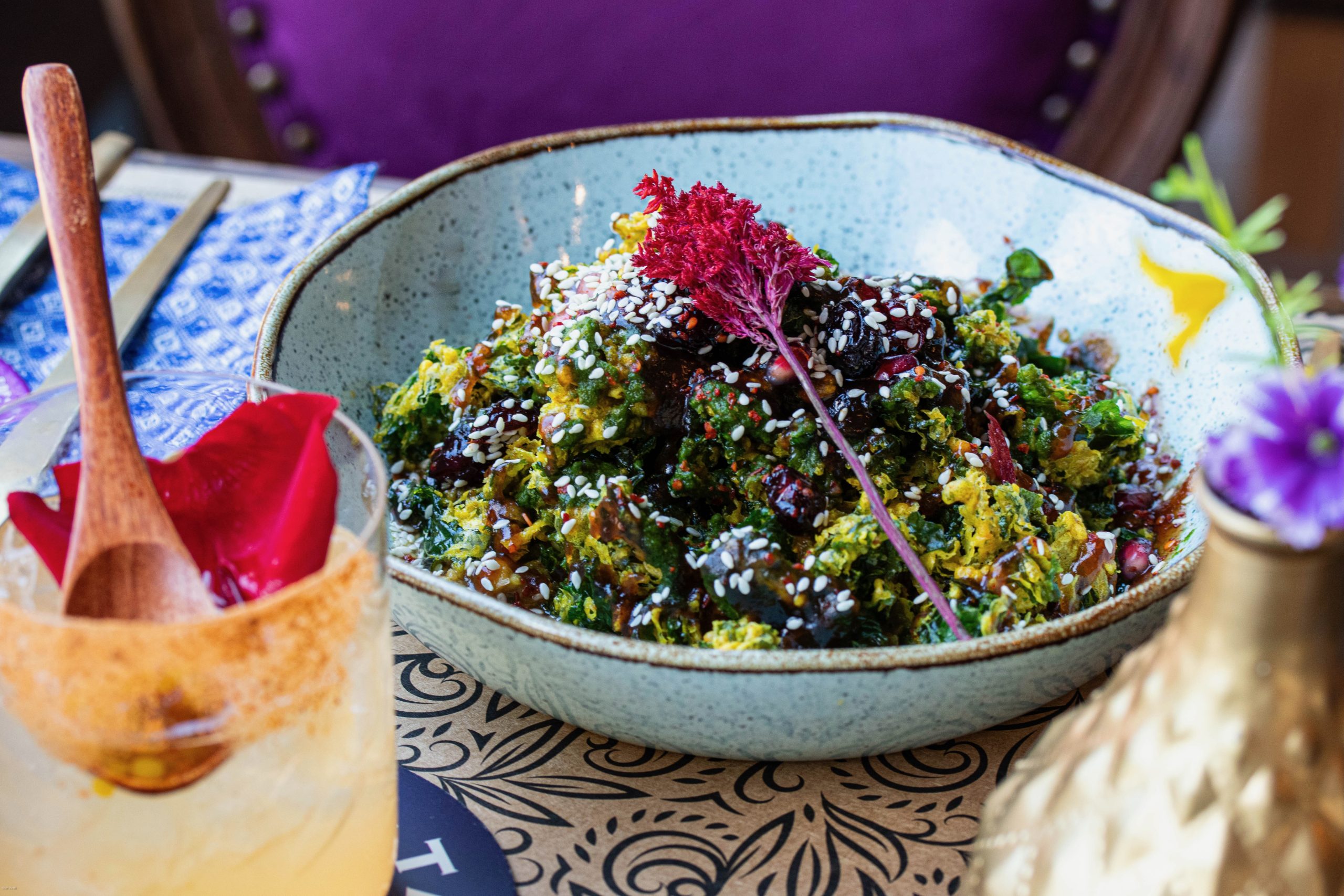Sitting in Teaism’s 8th Street NW location waiting for an interview about their pop-up just a week earlier, Chelsea Tan and Jill Nguyen, both 29, were already dreaming up another collaboration: sourdough milk bread from Nguyen and pandan kaya jam, made of coconut milk, from Tan.
“This is how it happens,” Nguyen says. Both bakers working without brick-and-mortar storefronts and hailing from Southeast Asia—Tan from Malaysia and Nguyen from Vietnam—the two have a lot in common. They’re self-taught and went full-time after using baking as an outlet during the early days of the COVID-19 pandemic.
Tan operates Chiboo Bakery out of a commercial kitchen in Chantilly, offering catering and specialty macaron orders in addition to pop-ups at farmers markets throughout the greater D.C. area. She determines flavors based on the seasonal produce available from vendors at the same markets, like the Bethesda Central Farm Market where she’s considered a highlight by Mitchell Berliner, co-owner of Central Farm Markets. Berliner likes to encourage other vendors to do the same, but Tan is a favorite among vendors and customers because of her “charming” nature and “fabulous” macarons.
Nguyen slings sourdough bread and pastries out of her cozy two-bedroom house on Capitol Hill, the namesake for her preorder-based Capitol Jill Baking (Nguyen also credits autocorrect for the name). Her treats are so popular that it’s typical for the Sunday pre-order to sell out in 30 minutes, and Nguyen says she’s already testing the limits of her home kitchen’s capacity.
For both, incorporating Southeast Asian flavors like black sesame, taro, pandan, and Vietnamese coffee into traditionally western pastries such as macarons, cookies, bread, and buns is crucial to their business.
Tan and Nguyen have followed each other on Instagram for some time, but they first met last summer for drinks. Since then, the two have taken it a step further and collaborated with their businesses.
The first public collaboration was a roaring success: Tan and Nguyen sold out of all their preordered and on-site baked goods at a Jan. 21 pop-up event at Rice Market on 14th Street NW. The line snaked through the small storefront, and started building up an hour before the event, Tan says.

The pop-up featured a menu of treats to celebrate Lunar New Year, a holiday largely celebrated in Southeast Asia and its diaspora after the first new moon on a lunar calendar, alongside a preorder treat box featuring honey cashew and mandarin passion-fruit macarons, chili crisp peanut cookies, black sesame coconut and red bean babka buns, and tamarind caramel doughnuts.
For those that weren’t lucky enough to snag a preorder before they sold out, Tan offered salted egg yolk pork floss macarons alongside regular character macaroons with citrus flavors. Nguyen brought along more black coconut buns, inspired by her favorite flavor of tangyuan, a Chinese rice ball dessert. Making and sharing them has become a New Year tradition of her own.
The idea for the pop-up came from Tan, who says it was meant to celebrate her first pop-up of the year and Nguyen’s first pop-up ever. In that same spirit of celebration, the bakers decided to include nostalgic flavors from their childhood and arrange the pickup on the day before the Lunar New Year, allowing people to share the treats with their friends on a night that gathering with food is typical.
“Every new year, there’s a treat box on the coffee table with things like nuts, snacks, and candies for when guests come,” Nguyen says. “That’s the idea here.”
Many customers were also happy to discover Rice Market, a Thai and Asian grocery store. The idea was to draw in customers to shop for ingredients for their New Year meals and introduce each vendor’s customers to the other, owner Sak Pollert says, and the result was a 25 percent increase in sales from a typical Saturday at Rice Market.
Pollert has known Tan for a couple years and has hosted her macaron pop-ups before, so inviting her back alongside Nguyen was a no-brainer. Still, the turnout far exceeded their expectations, and Pollert credits that to demand driven up by social media posts from users like local events expert Jade Womack.

Tan and Nguyen report that many Vietnamese and Malaysian customers came to support their work, asking for food recommendations and saying “happy New Year” in their respective languages. The outpouring support for the pop-up meant a lot for the pair, neither of whom have been able to celebrate with their family members, many of whom still live in Asia, for several years.
“I’m always really homesick during Lunar New Year,” Nguyen says. “But it brought me tons of joy.” Tan adds, “It was nice to see other people interested in the goodies that I would make for friends or family back home. It’s like I got to share a piece of home.”
Pollert also says it meant a lot to be able to provide the space for local Asian American business owners to showcase their talents and cultures together, an opportunity he hopes to offer to other makers so “they can pursue their dreams faster.”
Nguyen says the large crowd could be evidence there is demand for more Lunar New Year events in the region, which is home to a large and diverse Asian community. The timing of the event and its success was not lost on Nguyen, in light of the mass shootings in Monterey Park, California, on the first day of the holiday.
“I’m thinking—especially with a lot of Asian hate and tragedy lately—it was a positive impact that people showed up and met us, and took time to learn about these flavors, our stories, and what we’re trying to showcase as our culture,” she says. “We got to showcase a different side of what the Asian-American experience looks like, and I think that is very important.”




